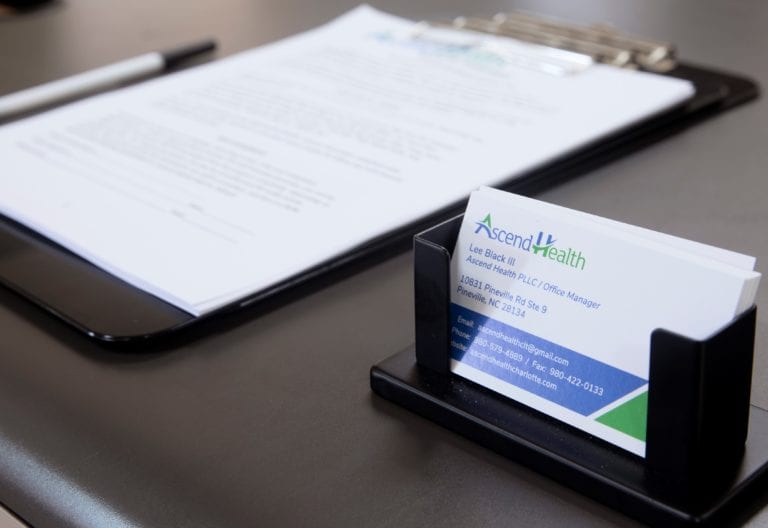You’ve completed detox or inpatient rehab, and now you’re exploring long-term support options. Buprenorphine maintenance covered by insurance can help you stay on track with your recovery plan. Whether you’re transitioning to Suboxone or considering Sublocade injections, having clarity on what your plan pays for will ease stress and let you focus on healing.
In this article, you’ll learn how Medicare, Medicaid, private insurers, and specialty programs handle ongoing buprenorphine therapy. You’ll also compare medication options, estimate out-of-pocket costs, and discover how to build a comprehensive aftercare plan—complete with outpatient Suboxone maintenance, relapse prevention therapy, and covered MAT programs through Ascend Health’s aftercare continuum.
Understand buprenorphine maintenance
What buprenorphine maintenance is
Buprenorphine maintenance refers to ongoing medication-assisted treatment (MAT) for opioid use disorder. By occupying opioid receptors without producing a full “high,” buprenorphine stabilizes cravings and withdrawal symptoms. In outpatient settings, you typically start with a low dose—often 2 to 4 mg per day—and gradually increase to an effective maintenance dose, sometimes up to 24 mg daily [1].
Benefits of ongoing therapy
- Stabilizes brain chemistry and reduces cravings
- Lowers risk of relapse and overdose deaths [2]
- Improves quality of life and retention in treatment
- Allows you to engage in counseling and work or school commitments
Ongoing buprenorphine therapy is most effective when combined with behavioral support such as cognitive behavioral therapy, peer groups, and relapse prevention planning.
Explore insurance options
Medicare coverage details
Medicare Part B covers opioid use disorder treatment services, including buprenorphine when provided by a doctor, qualified provider, or opioid treatment program. You can receive these services as long as medically necessary and even start treatment remotely using audio-video technology [3].
Compare Medicare Part B and Part D
| Plan | Covered services | Your cost factors |
|---|---|---|
| Part B (medical) | Office visits, counseling, program fees | 20% coinsurance after deductible |
| Part D (drug) | Prescription buprenorphine (tablets, films) | Tier-based copays, quantity limits in some plans [4] |
Telehealth buprenorphine treatment
Thanks to recent policy updates, Medicare now allows you to start and continue buprenorphine maintenance via telehealth if you’re adequately evaluated remotely. This flexibility can reduce travel burdens and maintain continuity within a telehealth suboxone maintenance program.
Medicaid coverage and limitations
Medicaid programs in most states list Suboxone (buprenorphine + naloxone) as a preferred drug, though prior authorization is common. Coverage can include:
- Medication costs
- Medical supervision during induction
- Counseling and support services
Be aware that some states impose lifetime limits on treatment duration. Check your state’s formulary and authorization requirements before committing to a program.
Private insurance plans
Most private insurers cover buprenorphine maintenance under their behavioral health or pharmacy benefits. Coverage varies by:
- Plan tier (generic vs brand)
- Prior authorization rules
- Quantity limits
Copay assistance programs
If you have private insurance, copay savings may reduce your monthly out-of-pocket expense—sometimes to zero for brands like BRIXADI [5]. Note that federal and state program participants (Medicare, Medicaid, VA) are typically ineligible for these savings.
Prior authorization requirements
Insurers often require documentation of:
- Opioid use disorder diagnosis
- Previous attempts at tapering or alternative MAT
- Counseling engagement
Starting with your provider to submit these details streamlines approval and prevents treatment gaps.
Veterans and specialty programs
If you’re a veteran, the VA covers buprenorphine maintenance through its opioid treatment programs. You may also qualify for state or tribal opioid response grants supported by SAMHSA funding [6]. These resources can offer low-cost or no-cost options for MAT aftercare.
Compare medication options
Suboxone versus Sublocade
| Feature | Suboxone (film/tablet) | Sublocade (monthly injection) |
|---|---|---|
| Administration | Daily sublingual dose | Monthly subcutaneous depot |
| Supervision | Less supervision after induction | Clinic visit required for each injection |
| Insurance coverage | Widely covered by Medicaid and private plans | Covered by many insurers; check sublocade treatment with insurance coverage |
| Risk of diversion | Lower with film than tablets | Minimal due to clinic administration |
| Ideal candidate | Those comfortable with self-dose | Patients needing stable monthly dosing |
Other buprenorphine formulations
- Mono-buprenorphine: Sometimes preferred for pregnant patients
- Buprenorphine ER implants: Less common but available in select programs
Discuss options with your provider to find the best fit for your lifestyle and insurance constraints.
Assess your out-of-pocket costs
Copays, deductibles, coinsurance
Your share of medication and services depends on:
- Plan type (HMO, PPO, high-deductible)
- Deductible balance
- Tier placement for generic vs brand drugs
- Coinsurance percentage for medical services
Tracking these costs in your plan’s online portal can prevent surprise bills.
Programs to reduce expenses
- Manufacturer assistance: Copay cards for Suboxone or BRIXADI
- State programs: Sliding-scale fees in community clinics
- Nonprofit grants: Pharmacy discount cards for uninsured individuals [2]
By combining insurance benefits with assistance programs, you can often keep your expenses manageable.
Plan aftercare continuum
Outpatient maintenance therapy
Once you leave residential care, enrolling in an outpatient buprenorphine treatment program ensures weekly or biweekly check-ins for dosing adjustments and counseling. Ascend Health’s aftercare continuum offers a full suite of services—from medication management to supportive therapies—under insurance coverage for your ongoing recovery.
Relapse prevention support
Integrating regular therapy sessions strengthens coping skills. A structured relapse prevention mat treatment plan typically includes:
- Individual counseling
- Group therapy
- Family support modules
These elements decrease relapse risk and keep you connected to peers and professionals.
Telehealth and hybrid models
If travel or scheduling is a barrier, hybrid programs let you split time between in-person visits and remote sessions. Telehealth follow-ups can take place within a telehealth opioid treatment with suboxone setup, maintaining clinical oversight while you balance work, school, or family responsibilities.
Choose the right program
Evaluating insurance benefits
Before committing, verify that your preferred program:
- Accepts your insurance for both medication and counseling
- Handles prior authorizations on your behalf
- Provides clear cost estimates for copays and coinsurance
Consider programs listed under insurance covered outpatient recovery program or outpatient opioid recovery program covered by insurance.
Working with your provider
Your prescriber and case manager can:
- Submit authorizations and appeal denials
- Coordinate between medical and mental health services
- Guide you to copay or grant resources
A close partnership ensures you never go without medication or critical support.
Take the next step
Navigating insurance coverage for buprenorphine maintenance can feel overwhelming, but the right resources make it manageable. By understanding your benefits under Medicare, Medicaid, private plans, and specialty programs, you can minimize costs and maintain uninterrupted treatment. Partner with Ascend Health’s aftercare continuum for outpatient Suboxone maintenance, relapse prevention therapy, and covered MAT programs designed to support your lasting recovery. Reach out today to verify your coverage and enroll in a program that aligns with your goals and your plan’s benefits.
References
- (PMC)
- (American Addiction Centers)
- (Medicare.gov)
- (GoodRx)
- (BRIXADI)
- (SAMHSA)



